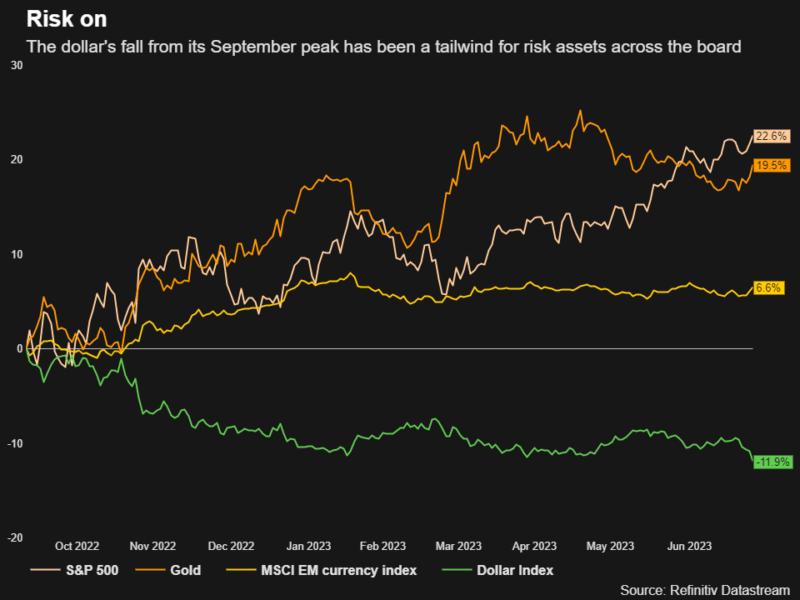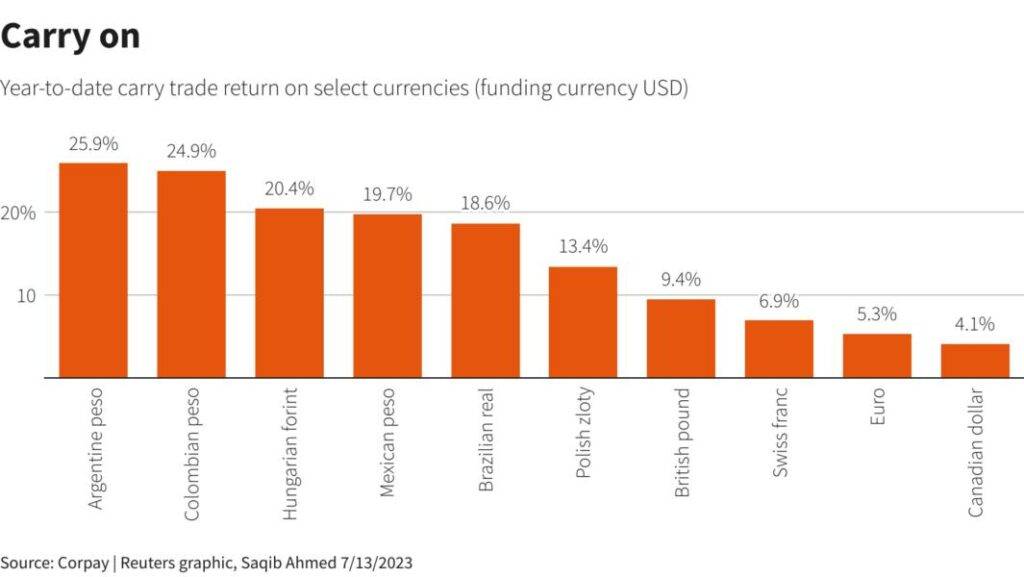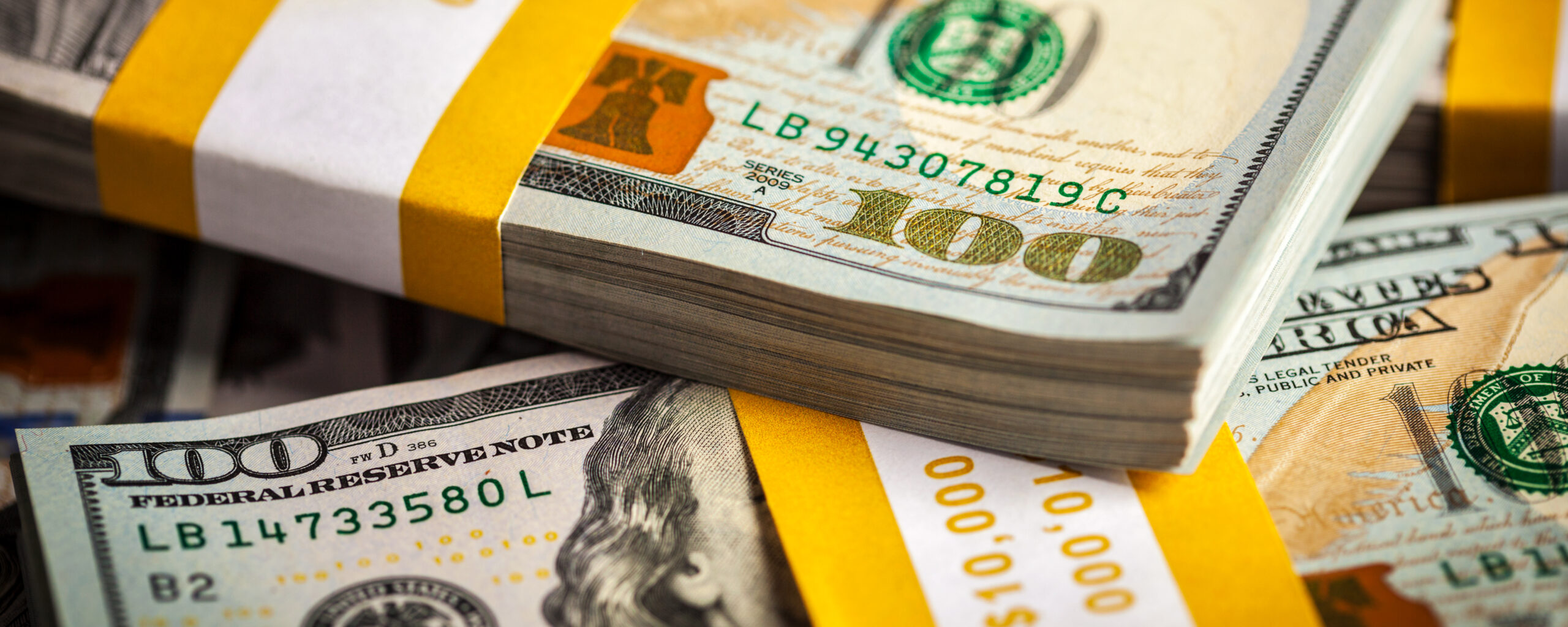In recent months, the US dollar has experienced a significant decline, providing a boon to risk assets across the globe and igniting a sense of market optimism. This downward trend in the dollar has been accelerated by cooling US inflation and suggests that the Federal Reserve is approaching the end of its interest rate-hiking cycle. As the linchpin of the global financial system, the dollar’s decline has the potential to benefit a wide range of assets if it continues to fall.
Tumbling US Dollar Fuels Export Competitiveness, Benefits Companies and Emerging Markets
One immediate advantage of a weaker dollar is the positive impact it has on some US companies. A depreciating currency makes exports more competitive abroad, enabling companies to expand their market share. Additionally, for multinationals, a weaker dollar means that converting foreign profits back into dollars becomes cheaper, resulting in increased revenue and improved financial performance. The technology sector, which generates a significant portion of its revenues overseas, stands to benefit greatly from this currency dynamic.
Not only do US companies benefit from a weaker dollar, but raw materials also become more affordable to foreign buyers. As commodities are often priced in dollars, a decline in the US currency leads to a decrease in their cost for international purchasers. This shift in pricing stimulates demand and boosts the profitability of commodity producers. The S&P/Goldman Sachs Commodity Index has already shown a 4.6% increase this month, set for its best performance since October.
Emerging markets, too, experience positive effects from a falling US currency. As the dollar weakens, servicing debt denominated in dollars becomes easier for these markets. This improvement in their debt-servicing ability alleviates financial pressures and contributes to stability. The MSCI International Emerging Market Currency Index has risen by 2.4% this year, further underlining the benefits emerging markets can derive from a depreciating dollar.
According to Alvise Marino, a foreign exchange strategist at Credit Suisse, the weaker dollar and its underlying driver, weaker inflation, act as a balm for the global markets, especially for assets outside the US. This sentiment is echoed by market experts who anticipate continued positive trends if the dollar maintains its downward trajectory.

Thomson Reuters reports that the dollar’s decline coincides with eased US Treasury yields in recent days. This has diminished the dollar’s attractiveness while simultaneously boosting a wide range of other currencies, including the Japanese yen and the Mexican peso. Observers note that the breaking of technical levels across foreign exchange markets is a clear indication of risk-sensitive currencies soaring on a global scale. As the dollar plunges towards levels seen before the Federal Reserve started hiking rates, investors are witnessing the significant impact on risk-sensitive assets.
A continued fall in the dollar holds the potential to bolster foreign exchange strategies such as the dollar-funded carry trade. This strategy involves selling dollars to buy higher-yielding currencies, thereby allowing investors to profit from the interest rate differential. The profitability of this strategy has already been evident this year, with investors selling dollars and buying the Colombian peso earning a year-to-date return of 25%. Likewise, the Polish zloty has yielded a solid return of 13%. The prospect of further dollar declines has led to bearish sentiment towards the US currency.
The falling dollar has also prompted relief among some countries, as it alleviates the need for them to intervene to support their currencies. Japan, for example, has witnessed a 3% tumble in the dollar against the yen, marking its most substantial weekly fall since January. The yen’s previous weakness had posed challenges for Japan’s import-reliant economy, raising expectations of market intervention. Similarly, the Swedish krona has seen notable weakening against the dollar, leading to speculations of potential action from Sweden’s central bank.
Click here to check the Live US Dollar Index
Despite the advantages of a weaker dollar, there are risks associated with a continued decline. A potential rebound in US inflation could result in increased bets on further Fed hawkishness, potentially unwinding the anti-dollar trades that have thrived in recent months. Nonetheless, the resilience of the US economy compared to other countries suggests that the Fed is unlikely to cut rates anytime soon, limiting the dollar’s near-term downside.
Paresh Upadhyaya, director of fixed income and currency strategy at Amundi US, remains bearish on the dollar while betting on gains in the Kazakhstan tenge, Uruguayan peso, and Indian rupee. Upadhyaya believes that the dollar’s outlook remains bleak, and if it continues to fall, carry trades will thrive.

Looking forward, experts like Helen Given, an FX trader at Monex USA, anticipate the Fed concluding its rate-hiking cycle before most other central banks. This expectation drains long-term momentum from the dollar. While the currency may recover some of its recent losses, Given predicts that in six months’ time, the dollar will be even weaker than it is today.
Conclusion
In conclusion, the tumbling US dollar has proven to be a significant catalyst, boosting risk assets across the globe and sparking market optimism. As the dollar weakens, it benefits US companies, improves the affordability of raw materials for foreign buyers, and provides relief for emerging markets burdened by dollar-denominated debt. While risks remain, such as potential US inflation rebounds, experts anticipate a continued decline in the dollar, leading to further benefits for various market participants.
Click here to read our latest article on the Surge in Crude Oil Prices

